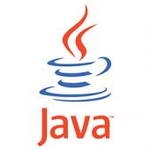
Like a lot of places, it seems, we have gone through our fair share of people. Most don't fit, and detect this and get another job. Many are happy moving on, while some find that they really had it a lot better here than at the new place. Grass being greener syndrome. Every now and then there's a person that is asked to leave. While there are just a few basic reasons: not enough work, not enough money, or bad fit, there are a few in that last category that have either become people that would not have been hired, or were such consummate con artists that they were always this way and just hid it well enough in the interviewing process to get in the door. These last group of people really don't last very long, but the mutators are an interesting breed in their final days.
Such is the time I find myself in this week. One of the developers has decided to leave - right ahead of being asked to leave. I have no idea where he's going, nor do I really care, but it does amaze me to think how he could have gotten a job with the attitude he has displayed here for the last year or so. Understandably, people respond to their environments differently. And if there's a hostile environment there is always the fight or flight response. But there's more to it than that as we're supposed to be evolved beings.
If you find yourself in a job that you really don't like - change something. Change the way you do your job, change the way to approach your job, change the hours you do your job, change something to try and make it better - or change your job. Don't sit and complain all day about your situation... no one wants to listen after a bit. Don't complain that they aren't giving you enough advancement opportunities - go out and make some, and if you can't, then find some place that you can.
If you can't change anything about your job, and you can't find another, then you're in a pickle because it probably means that you shouldn't have been hired for the job you have, and need to think about another line of work. Write a book, change careers, do something.
Alas, the developer who is leaving here is most likely doing none of these things. He's probably interviewed just well enough to get a job based on the business knowledge he's gained while being here. His work ethic is bad - I can't remember him coming in regularly before the market open. His development skills are very marginal - I can't think of one compliment he's gained from a fellow developer in all the time he's been here. Most importantly, he's a complainer. It's just hard to work with guys like this for a long time. It's draining.
So rather than finish up his two weeks with a little bit of class, he's taken to coming in even later, doing even less, and when given the chance to get out of the last few days of his last week, chooses to put off doing things which would allow him to have a little time off between jobs. It's really almost amazing. He's not even actively leaving - one more thing he's not very good at.
People at his new workplace are probably going to see this and figure out what we have figured out. Sure, he may work harder because he likes the environment there better than here, but I have a feeling that in the end, it's more about him, than his environment. You either are a good worker, or your not. It doesn't matter what job you have, you either do it with some sense of quality and conviction, or you don't. And if you don't, no job is ever going to stop you from complaining.





